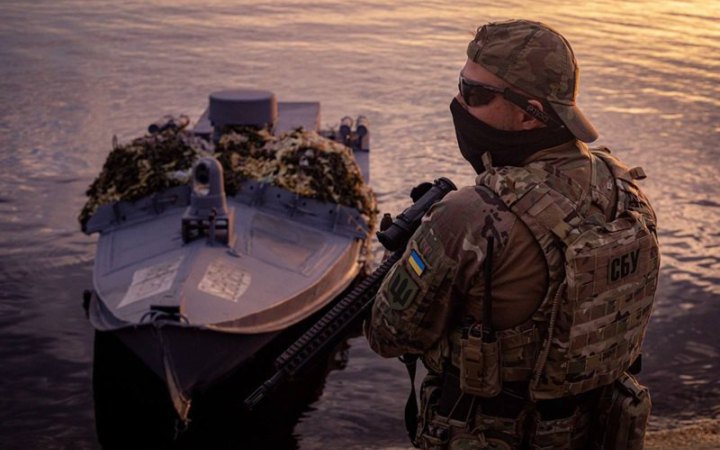Thanks to the Sea Baby marine drones that planted more than 15 underwater mines near the Crimean peninsula, the SBU hit at least 4 Russian ships. The explosives were placed on routes used exclusively by warships of the Russian occupiers.
The Wall Street Journal reports this with reference to sources in the SBU.
"After the first use of maritime drones, the Russians built larger barriers at the entrance to the port in Sevastopol, which made drone strikes almost impossible. So the SBU Head Vasyl Malyuk's team came up with an alternative: laying sea mines. The so-called bottom mines are made of plastic and weigh about 180 kg, and they are difficult to detect because they sink into the silt under shallow water," reads the article describing the work of the SBU's SeaBaby marine drones.
According to American journalists, for a month and a half, the Malyuk's specialised team tracked the routes of ships and civilian transport before sending the SeaBaby to plant two mines. On 14 September, the Samum, a missile corvette, was hit by a mine that blew a hole in its stern. It is still undergoing repairs in dry dock.
"Over the following weeks, the SeaBabies sailed back and forth, covering more than 3,000 miles, laying about 15 more mines. During one of the voyages, detected by three Raptor-class patrol boats, the drone opened fire with a grenade launcher, hitting the enemy vessel," journalists recounted a conversation with SBU Brigadier General Ivan Lukashevych, better known by his call sign Hunter.
On 11 October, the large patrol boat Pavel Derzhavin punctured its side while entering Sevastopol Bay. It was on its way to the port for maintenance. Minesweepers and divers searched the area for mines, apparently without success. On 13 October, the Pavel Derzhavin was redirected to another port for repairs, but while leaving Sevastopol Bay, it hit a mine. A large tugboat sent to rescue it also hit a mine and had to be towed back to the port.
"A few days later, an explosion also damaged a modern mine countermeasures ship, one of two in service in Russia," the WSJ reports on the damage to the Vladimir Kozitskiy, a transparent-bottomed vessel.
According to The Wall Street Journal, the remote mining carried out by SBU Sea Baby drones is the first example of successful remote mining in the world.
"Previously, maritime drones were used mainly for surveillance or logistics. We (the SBU) do many things that no one else in the world has done before," says a source in the Service.








